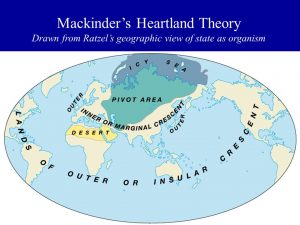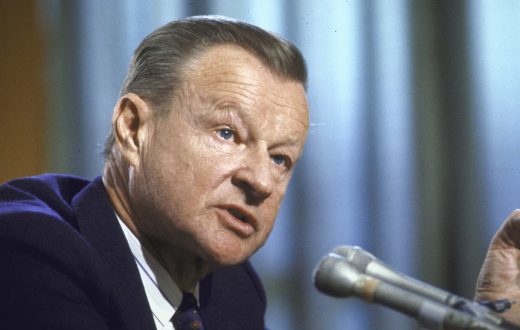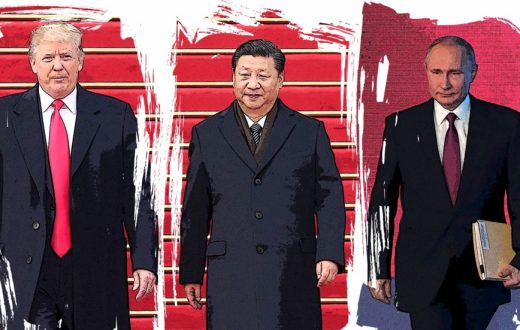Much closer with us than Sun Tzu or Clausewitz, Halford MacKinder is the new thinker that YoungDiplomats focuses on. He is very important to understand how geopolitics was built.
Who was he ?
Halford Mackinder was a 20th-century geopolitical scholar who is attributed for writing the Heartland Theory. Halford Mackinder was born on February 15th, 1861 in Gainsborough, England and received his education at the Epsom College and later at Christ Church in Oxford, where he received his biology degree in 1883. Mackinder had a liking for Geography and was a proponent of having physical geography and human geography taught as one subject. Mackinder was a founding member of the Geographical Association and served as the association’s chairperson between 1913 and 1946. In 1904, Halford Mackinder presented a paper to the Royal Geographical Society which was titled “The Geographical Pivot of History” and in it he introduced the Heartland Theory and explained it in depth. Mackinder died on March 6th, 1947, aged 86 years. The scholar left a lasting legacy as he introduced geopolitics to the world and is commonly labeled as the “father of geopolitics.”
The world region
In the “Geographical Pivot of History,” Halford Mackinder stated that world’s terrestrial surface was segmented into three basic geographical regions which are the outlying islands, the offshore islands, and the World-island. Halford relied on the interlinking of continents to come up with the dichotomy whereby interlinked continents were classified in a common region. According to Mackinder, the World-Island was made up of Europe, Asia, and Africa. World-Island was the largest of the three regions, accounting for two-thirds of the earth’s terrestrial surface and home to about 87.5% of the world’s population. World-Island was also the richest of the three world regions in resources. The islands of Japan and the British Isles were categorized under the offshore islands. The outlying islands were made up of the Americas as well as Australia. Halford stated that the Heartland was made up of the territory originally occupied by the Russian Empire and by the Soviet Union soon after that (except for the Kamchatka Peninsula).
Significance of Eastern Europe
 Eastern Europe is of critical importance in the Heartland Theory. In the “Geographical Pivot of History,” Mackinder stated that
Eastern Europe is of critical importance in the Heartland Theory. In the “Geographical Pivot of History,” Mackinder stated that
” Who rules Eastern Europe commands the Heartland
Who rules the Heartland commands the World Island
Who rules the World Island commands the world ”
While the Heartland has as much as 50% of the resources in the world, the region is largely under-developed, and its residents live in relatively poor conditions. Countries of Eastern Europe enjoy proximity to the Heartland and therefore are in literally the best position to take advantage of its resources. However, the Heartland has been under Russian authority for hundreds of years and so to capture the Heartland, countries needed to prevent the expansion of Russian influence in the Heartland at the very least. Mackinder believed that countries from other world regions (the offshore islands and the outlying islands) were hindered from making a successful invasion in the Heartland by the geographical barriers surrounding the Heartland (the Carpathian Mountains to the west, the Hindukush Ranges to the South, and the Altai to the east and the Baltic Sea to the north). Only countries in Eastern Europe were seen as potential candidates of launching a successful invasion in the Heartland.
In the age of modern warfare, Mackinder’s theory is widely considered outdated. At the time he proposed his theory, he took into consideration world history only in the context of conflict between land and sea powers. Nations with large navies were at an advantage over those that could not successfully navigate the oceans, Mackinder suggested. Of course, in the modern era, the use of aircraft has greatly changed the ability to control territory and provide defensive capabilities. For every thinkers and actors, it is paramount to be aware of theories.
You can find part of this article here https://www.worldatlas.com/articles/what-is-the-heartland-theory.html.








